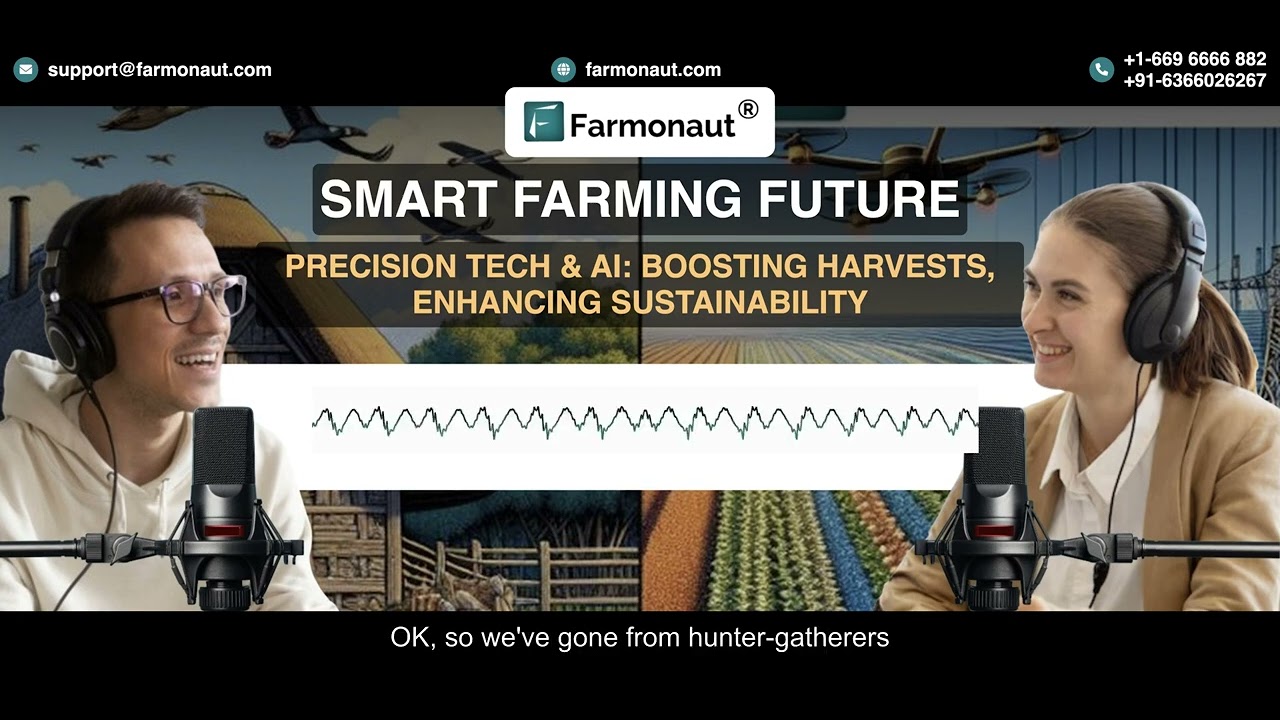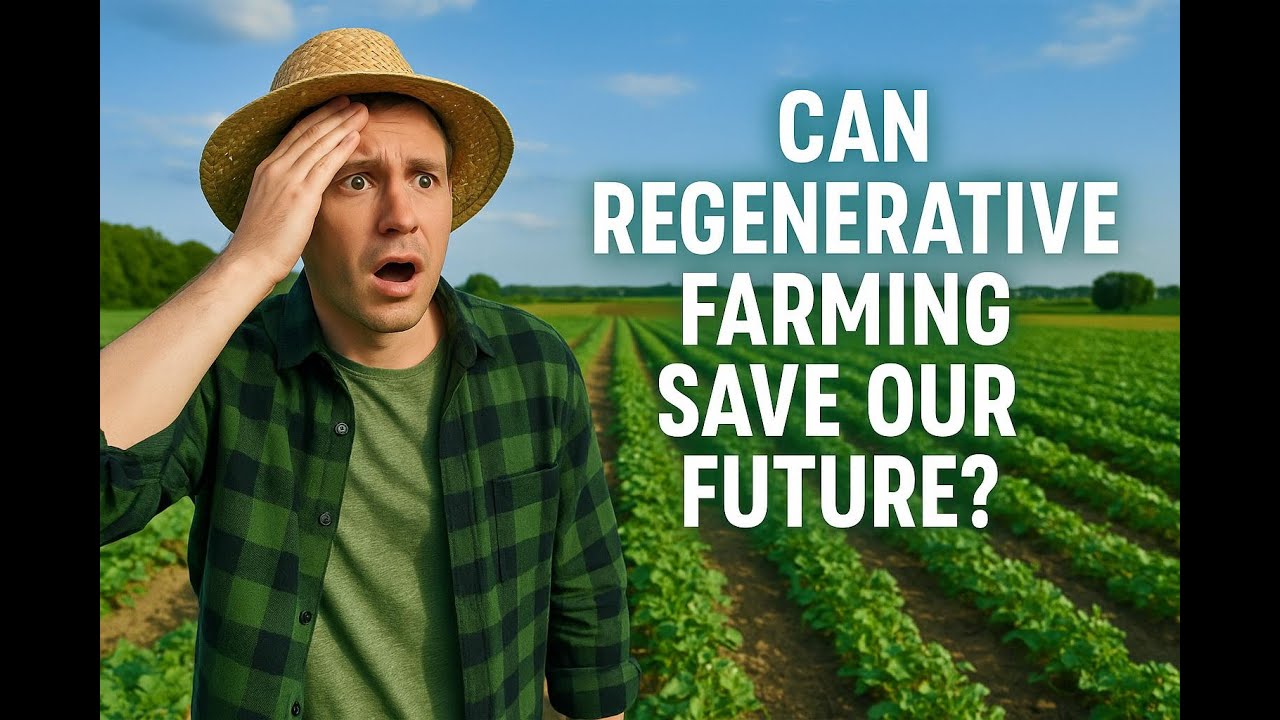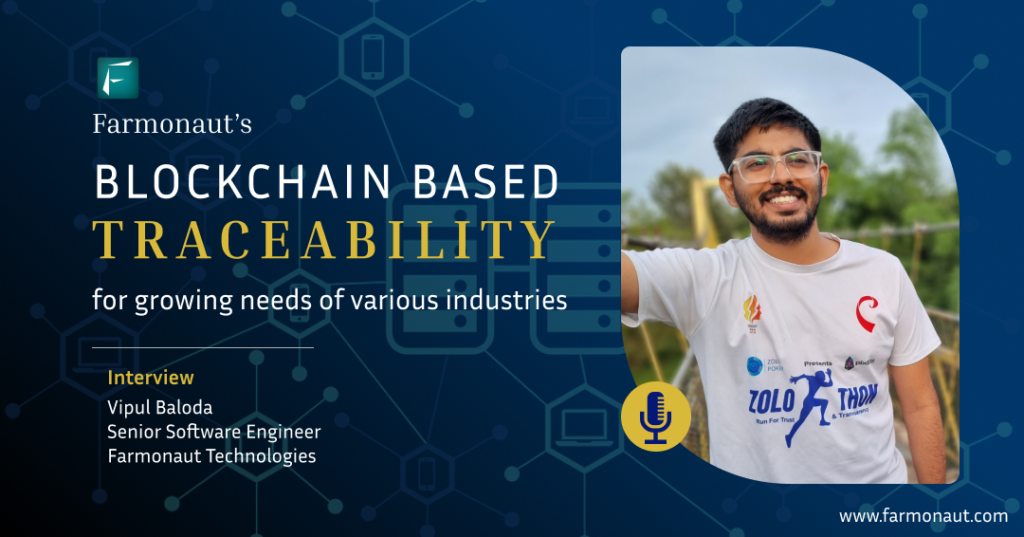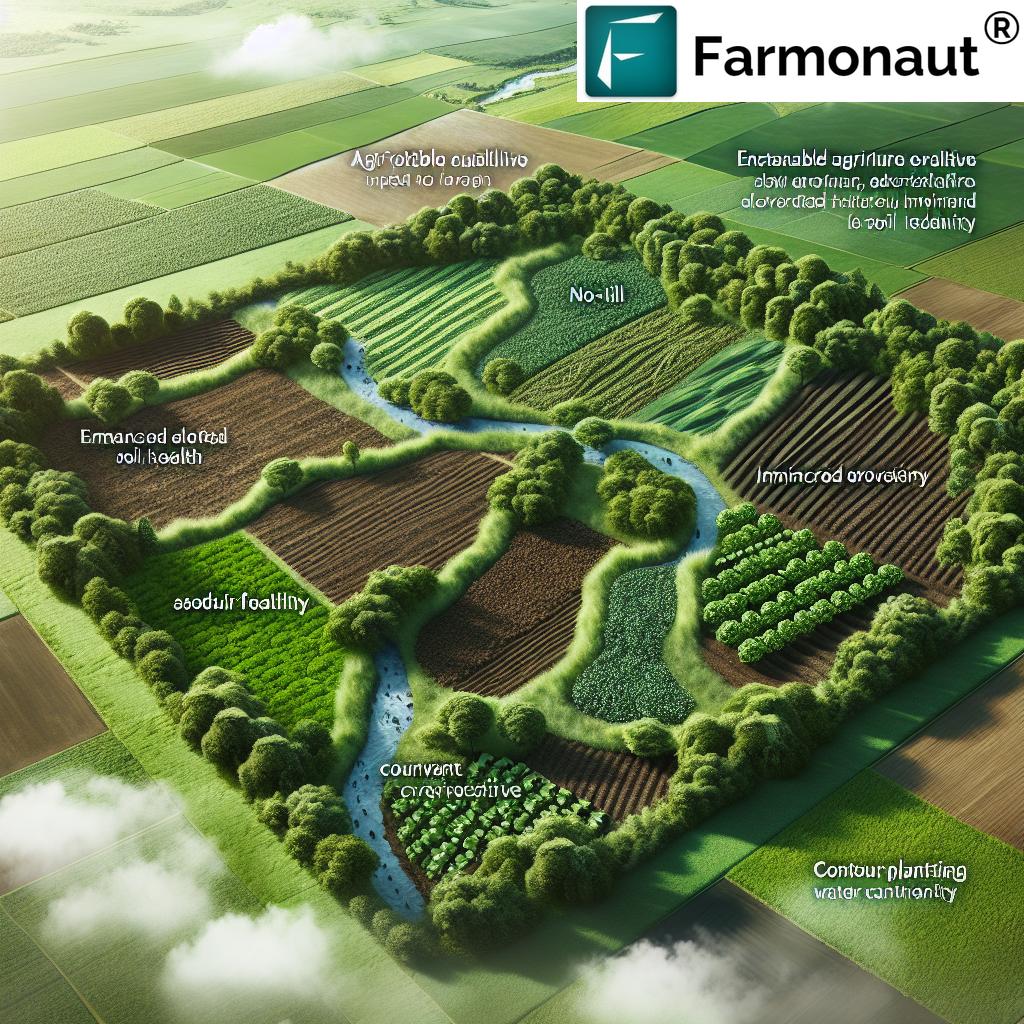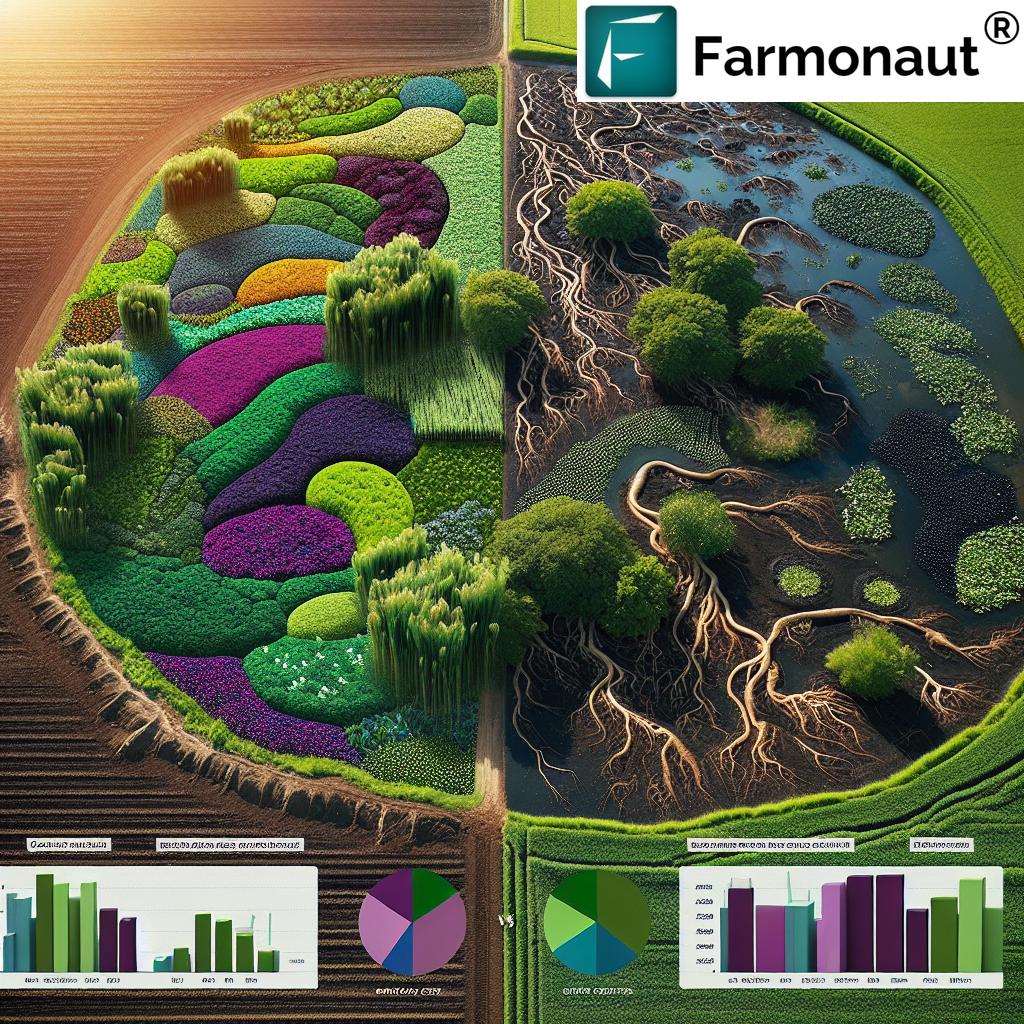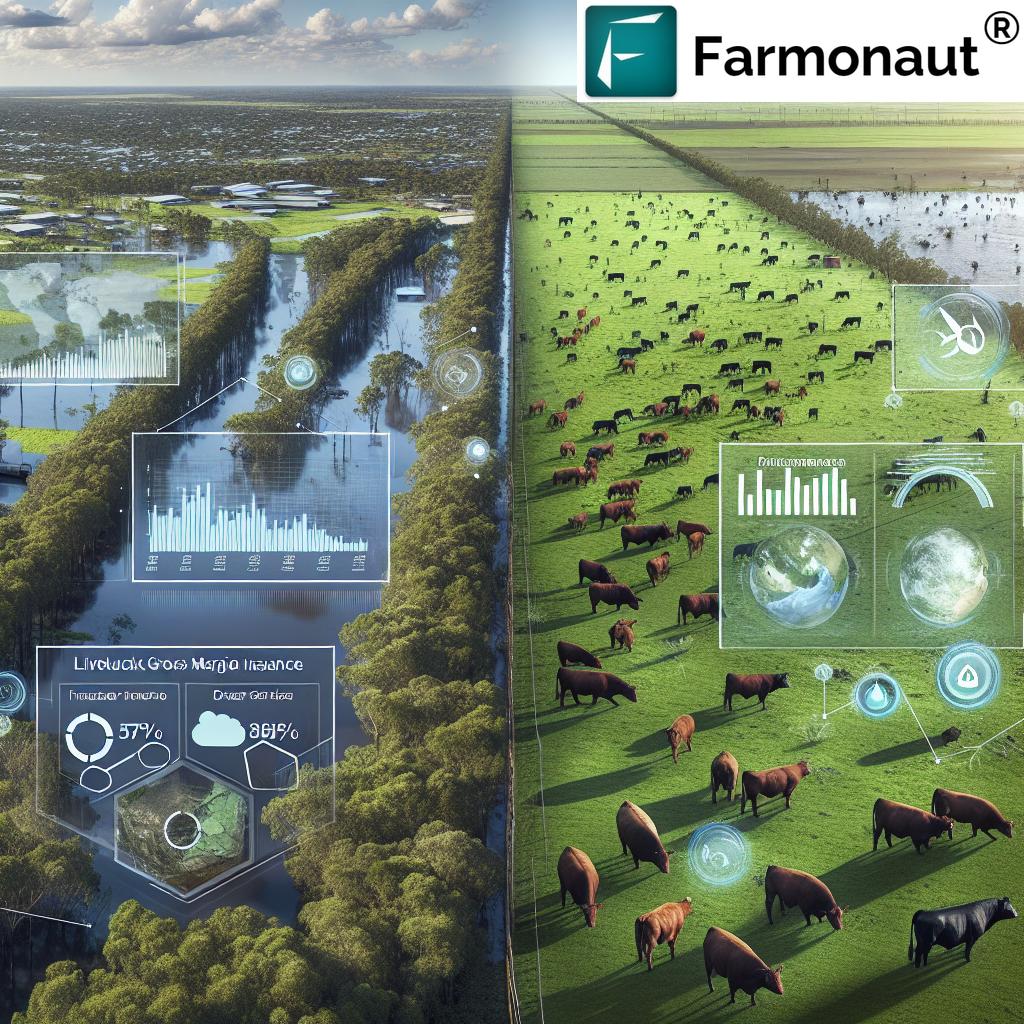Sustainable Agriculture Network: 5 Powerful Models for 2025
“Over 70% of global food is produced by smallholder farmers, many now joining sustainable agriculture networks for 2025.”
- Introduction: Catalyzing the Future of Farming in 2025
- What Are Sustainable Agriculture Networks?
- Why 2025 Is a Turning Point for Sustainable Agriculture
- Top 5 Sustainable Agriculture Network Models for 2025
- Comparative Table: 5 Sustainable Agriculture Network Models (2025)
- Powering Sustainability Through Technology & Innovation
- Digital Services for Sustainable Agriculture Networks
- The Road Ahead: Scaling Sustainable Agriculture Networks Globally
- Farmonaut Subscription, Web & Mobile Apps
- FAQ: Sustainable Agriculture Networks in 2025
- Conclusion: Advancing Resilient Food Systems for a Greener World
Catalyzing the Future of Farming in 2025
As we approach 2025, the significance of sustainable agriculture networks has never been clearer. Facing mounting global challenges—including food security, environmental conservation, and the livelihoods of rural farming communities—agrifood systems are at a crossroad. Our ability to address these intertwined concerns depends on collaborative, multi-stakeholder platforms that bridge farmers, researchers, policymakers, and consumers for a brighter, more sustainable future.
Sustainable agriculture networks (SANs) are emerging as pivotal platforms for promoting eco-friendly, resilient, and equitable farming practices. These networks, whether regional or global, leverage innovation, knowledge sharing, advocacy, and technology to tackle climate pressures, strengthen food systems, and empower local producers.
What Are Sustainable Agriculture Networks?
A sustainable agriculture network is more than just a collaboration—it is a vibrant ecosystem of farmers, institutions, NGOs, policymakers, researchers, and sometimes consumers. These platforms exist, both locally and globally, to promote environmentally-sound practices, institutional support, knowledge exchange, and resilient innovation.
- Act as hubs of information, research, and capacity-building
- Enable access to new technologies, market connections, and community-based solutions
- Amplify advocacy for policy change and sustainable development
- Foster grassroots, inclusive approaches—essential for lasting sustainability
Examples range from the Alabama Sustainable Agriculture Network (ASAN) in the United States, to collections such as the Women Food and Agriculture Network (WFAN), Kenya Organic Agriculture Network (KOAN), and Sustainable Agriculture India (SAI). Each of these models brings unique contributions to the ongoing transformation of agricultural systems around the world.
Why 2025 Is a Turning Point for Sustainable Agriculture
Sustainable agriculture networks in 2025 represent a critical strategy to advance sustainability, equity, and resilience at scale. Several factors make this a landmark period:
- Population growth: By 2025, global food demand will further increase, putting more pressure on land and natural resources.
- Climate change: Extreme weather, shifting rainfall, and rising temperatures affect yields, pest pressures, and water availability.
- Land degradation: Erosion, salinity, and nutrient loss threaten productivity and ecosystem health.
- Market volatility: Price swings and supply chain disruptions require agile, informed farmers supported by strong networks.
- Digital revolution: Technology, AI, and data-driven platforms are transforming how farming, monitoring, and decision-making occur globally.
In this context, sustainable agriculture networks are essential for fostering knowledge dissemination, adaptive practices, and system-wide transformations.
“Sustainable agriculture networks aim to reduce chemical pesticide use by up to 50% by 2025 through eco-friendly practices.”
Top 5 Sustainable Agriculture Network Models for 2025
Focus Keyword: Sustainable Agriculture Network Models
In 2025, five powerful models lead global transformation in sustainable agriculture practices. Localization, inclusivity, knowledge-sharing, and innovation are at their core. We’ll explore each model, their principles, and the impact they’re making on their communities and beyond.
1. Alabama Sustainable Agriculture Network (ASAN) – United States
The Alabama Sustainable Agriculture Network (asan) exemplifies how grassroots initiatives and localized platforms can catalyze sustainable agricultural change in the United States. This network connects small-scale farmers, researchers, consumers, and local institutions, building vibrant communities of practice around:
- Organic farming principles and reducing chemical inputs
- Soil health, fertility restoration, and biodiversity enhancement
- Participatory education through farm tours, workshops, and community programs
- Cooperative marketing for improving market access
- Climate adaptation strategies to make farms more resilient
By 2025, ASAN continues to prioritize localized knowledge, capacity-building, and direct empowering of farmers within Alabama’s diverse rural landscapes. Its approach demonstrates why grassroots initiatives are foundational to advancing sustainable, equitable food systems.
2. Women Food and Agriculture Network (WFAN)
The Women Food and Agriculture Network (WFAN) is a pioneering platform amplifying the voices, leadership, and participation of women in global agricultural development. Centered on gender equity as a pillar for long-term sustainability, this network:
- Addresses unique challenges and contributions of women in farming
- Champions policies for equitable land access, credit, and decision-making
- Implements training sessions, advocacy campaigns, and peer-to-peer learning
- Works to close gaps in education, resources, and representation
By 2025, WFAN is reinforcing the notion that sustainable agriculture must be inclusive and just to be truly effective. Its model is inspiring thousands across North America and beyond, serving as a beacon for socially equitable agricultural change.
3. Kenya Organic Agriculture Network (KOAN)
The Kenya Organic Agriculture Network (KOAN) demonstrates the potential for sustainable transformation at an international scale. In Kenya and across East Africa, KOAN:
- Advances organic farming through farmer cooperatives, extension services, and certification programs
- Promotes conservation of soil, water, and biodiversity
- Coordinates among research bodies, governmental organizations, and market actors
- Helps adapt food production to climate pressures and ensure food security
KOAN’s approach balances direct support to smallholder farmers with advocacy for better policies at the national and local levels—empowering both livelihoods and landscape restoration in Kenya for 2025.
4. Sustainable Agriculture India (SAI)
Sustainable Agriculture India (SAI) is driving agroecological transformation across India, one of the world’s most diverse agricultural landscapes. Its model integrates:
- Farmer-led innovations and knowledge-sharing at the grassroots level
- Promotion of regenerative agriculture, water conservation, and agroforestry systems
- Bridging traditional wisdom with scientific research for context-specific solutions
- Networks connecting academia, local NGOs, and governmental bodies
- Participatory, inclusive approaches to sustainable and resilient food systems
SAI’s expansive reach highlights how participatory models, rooted in local knowledge, are critical for advancing agroecological principles, adapting to change, and fostering exchange across social and environmental gradients in 2025.
5. Thematic & International Sustainable Agriculture Networks
Alongside these regional leaders, other international or thematic sustainable agriculture networks foster collaboration at a higher scale. Examples include platforms coordinated by the Food and Agriculture Organization (FAO), and regional networks in Europe or Latin America. These:
- Facilitate knowledge exchange and capacity-building between regions and countries
- Promote best practice dissemination—spanning organic farming, conservation, and fair trade
- Support climate-smart agricultural adaptation and resilience policies at scale
- Foster innovation across landscapes and food systems globally
The inclusive, multi-stakeholder design of these networks demonstrates that, for 2025 and beyond, local and international collaboration is critical for navigating environmental pressures and supply chain challenges worldwide.
Comparative Table: 5 Sustainable Agriculture Network Models (2025)
| Model Name | Description | Main Eco-Friendly Practices | Estimated Farmer Participation (2025) | Estimated Environmental Impact Score (2025)* | Innovation Highlights |
|---|---|---|---|---|---|
| Alabama Sustainable Agriculture Network (ASAN) | Grassroots US network fostering local collaboration for organic, resilient, community-based agriculture. | Organic practices, soil health, biodiversity restoration, climate adaptation, reduced chemicals | 8,000+ | 8.5/10 | Cooperative marketing, participatory workshops, farm tours, market access solutions |
| Women Food and Agriculture Network (WFAN) | Platform amplifying women farmers’ participation and closing gender equity gaps in agriculture. | Peer networks, eco-education, land & credit advocacy, resource sharing, inclusive policies | 5,500+ | 8/10 | Gender-responsive training, leadership amplification, advocacy campaigns |
| Kenya Organic Agriculture Network (KOAN) | National network advancing organic farming, soil & water conservation, and certification in Kenya. | Organic certification, integrated pest mgmt, water/soil conservation, biodiversity support | 27,000+ | 9/10 | Extension services, policy dialogue, certified organic marketing |
| Sustainable Agriculture India (SAI) | Agroecological platform mainstreaming farmers’ innovations & participatory development across India. | Regenerative agriculture, water harvesting, agroforestry, mixed cropping, climate resilience | 60,000+ | 9.2/10 | Research-farmer bridging network, participatory field experiments, scaling local innovations |
| Thematic & Int’l Sustainable Agriculture Networks | International knowledge-sharing and advocacy platforms linking regions and cross-border themes. | Global best practice dissemination, cross-border conservation, climate-smart policies | Variable (100,000+) | 8.7/10 | Inter-regional knowledge exchange, digital innovation, policy support tools |
*Estimated based on adoption of sustainable practices, biodiversity support, water/soil conservation, and climate mitigation impact in 2025.
Powering Sustainability Through Technology & Innovation
Modern sustainable agriculture networks leverage cutting-edge technologies to address the most pressing challenges of our time. The integration of satellite-based monitoring, artificial intelligence, and blockchain traceability introduces a new era of precision, transparency, and inclusivity across agricultural systems.
- Satellite imagery: Enables continuous monitoring of crop health, soil fertility, and ecosystem restoration at both the field and landscape scale.
- AI and data science: Drive predictive advisory systems for weather, resource management, and adaptive decision-making by farmers, institutions, and policymakers.
- Blockchain: Guarantees supply chain transparency and helps demonstrate sustainability claims to consumers and regulators.
- Mobile and API platforms: Provide farmers and organizations with user-friendly access to field-specific recommendations, environmental impact data, and resource optimization tools.
By 2025, it’s clear that the combination of sustainability-rooted network models with digital technologies has the power to transform global food security, rural livelihoods, and environmental conservation.
Digital Services for Sustainable Agriculture Networks
Sustainable agriculture networks gain immense value from affordable, scalable digital solutions. For example, our Farmonaut platform delivers transformative technologies that support agricultural sustainability in 2025 and beyond:
- Satellite-Based Monitoring: We provide multispectral satellite insights on crop and soil health, offering actionable data for everyday farm decisions and large-scale farm management solutions.
- AI-Powered Decision Support: Our Jeevn AI system delivers real-time recommendations on weather, resource optimization, and cropping strategies—key for resilience and productivity.
- Blockchain Traceability: Our traceability products ensure supply chain integrity and transparency, from seed to market, for sustainable agriculture networks, exporters, and consumers.
- Environmental Impact & Carbon Management: Features such as carbon footprinting assessments help organizations and farmers monitor, manage, and communicate their greenhouse gas emissions.
- Resource and Fleet Management: Tools within our platform optimize logistics for farming equipment and vehicles, reducing operational costs and supporting sustainable agri-transformation.
- Digital Lending and Crop Insurance: Financial institutions can use our crop loan and insurance verification solutions to improve access to finance, supporting rural households and reducing systemic risk.
These services are accessible via our web and mobile apps—empowering sustainable agriculture networks across the globe to scale their impact.
The Road Ahead: Scaling Sustainable Agriculture Networks Globally
As sustainable agriculture matures post-2025, SANs must evolve and expand to meet new global demands. Major trends shaping the future include:
- Integration of Digital and Human Networks: The most resilient networks will blend technology platforms with in-person, community-driven initiatives—bridging the latest advances with time-honored farming traditions.
- Scaling Inclusivity: Networks will become even more inclusive by closing gender, resource, and knowledge gaps; fostering leadership among women, youth, and minority groups.
- Regionalization with Global Outlook: While place-based problem-solving remains vital, international knowledge exchange and coordinated responses to climate pressures will drive success.
Large-scale farm management solutions will empower organizations to adapt to variable conditions and regulatory landscapes worldwide. - Focus on Resilience and Circularity: The best networks will incorporate regenerative agriculture, circular economy principles, and continuous learning for economic, social, and ecological resilience.
Ultimately, sustainable agriculture networks—supported by robust digital solutions—will shape the future of food security, climate adaptation, environmental conservation, and equitable rural development.
Farmonaut Subscription, Web & Mobile Apps
For sustainable agriculture networks and all their stakeholders, implementation at scale is now possible through user-friendly digital platforms. Farmonaut offers not just technology, but a modular and cost-effective subscription model that is easily accessible across devices.
To further support integration, comprehensive APIs are available for custom network and enterprise requirements:
Farmonaut API | API Developer Documentation
FAQ: Sustainable Agriculture Networks in 2025
What is a sustainable agriculture network?
A sustainable agriculture network is a formal or informal platform that connects various agricultural system stakeholders—such as farmers, researchers, NGOs, policymakers, and consumers—aiming to promote, implement, and advance eco-friendly, equitable farming practices. These networks focus on knowledge sharing, innovation dissemination, advocacy, capacity building, and collaboration for resilient, sustainable food systems.
Why are sustainable agriculture networks important in 2025?
By 2025, global environmental and economic pressures—including climate change, land degradation, market risks, and food security challenges—make collaborative solutions critical. Sustainable agriculture networks create hubs of innovation and knowledge exchange, helping farmers adapt practices, policymakers to shape effective strategies, and consumers to access trustworthy, sustainable food supply chains.
How do these networks advance eco-friendly farming practices?
Sustainable agriculture networks promote:
- Organic and regenerative agriculture
- Resource conservation—such as soil, water, and biodiversity
- Reduced reliance on chemical pesticides and fertilizers
- Participatory workshops, peer-to-peer learning, and farmer-led experimentation
- Inclusive, gender-equitable approaches expanding access to land and credit
What role does technology play in scaling sustainable agriculture networks?
Technology is instrumental: satellite-based monitoring, AI-powered advisory, and blockchain traceability help networks scale efficiently. These tools offer real-time insights, facilitate resource optimization, monitor environmental impact, and ensure transparent, trustworthy supply chains—all essential for modern sustainable agriculture.
How can networks acquire real-time monitoring and digital solutions?
Platforms like Farmonaut provide subscription-based, user-friendly web and mobile apps, as well as APIs for integration into new or existing network platforms. These solutions empower networks—from local cooperatives to national organizations—with advanced monitoring, advisory, and impact tracking for sustainable food systems.
Conclusion: Advancing Resilient Food Systems for a Greener World
Sustainable agriculture networks are anchors for 2025’s most pressing priorities—eco-friendly farming, social equity, environmental protection, and food security. From the localized strength of the Alabama Sustainable Agriculture Network and Women Food and Agriculture Network, to globally connected platforms like the Kenya Organic Agriculture Network and Sustainable Agriculture India, these networks are changing the world.
With the support of robust, affordable technology—including satellite imagery, AI, and blockchain—these models empower farmers, organizations, and communities to catalyze transformation on both local and global scales. Looking forward, continued investment and learning from these networks will be essential in advancing resilient agricultural systems for people and the planet in 2025 and beyond.


